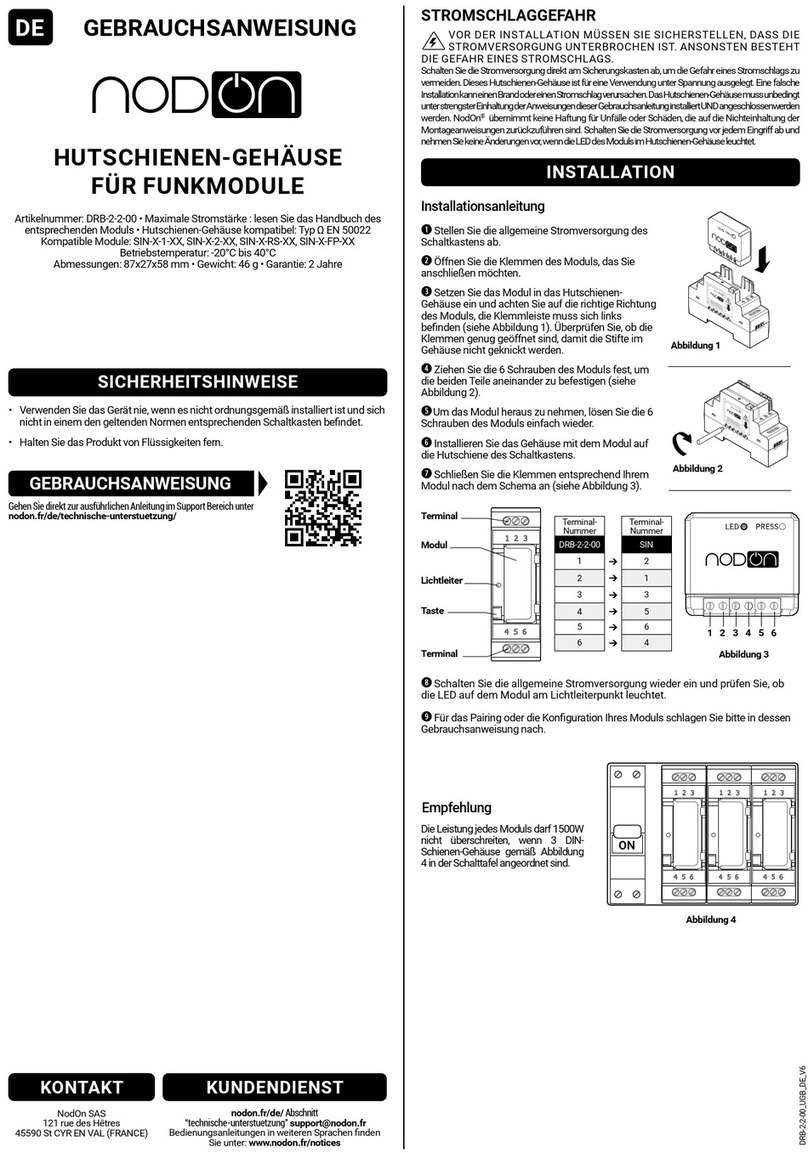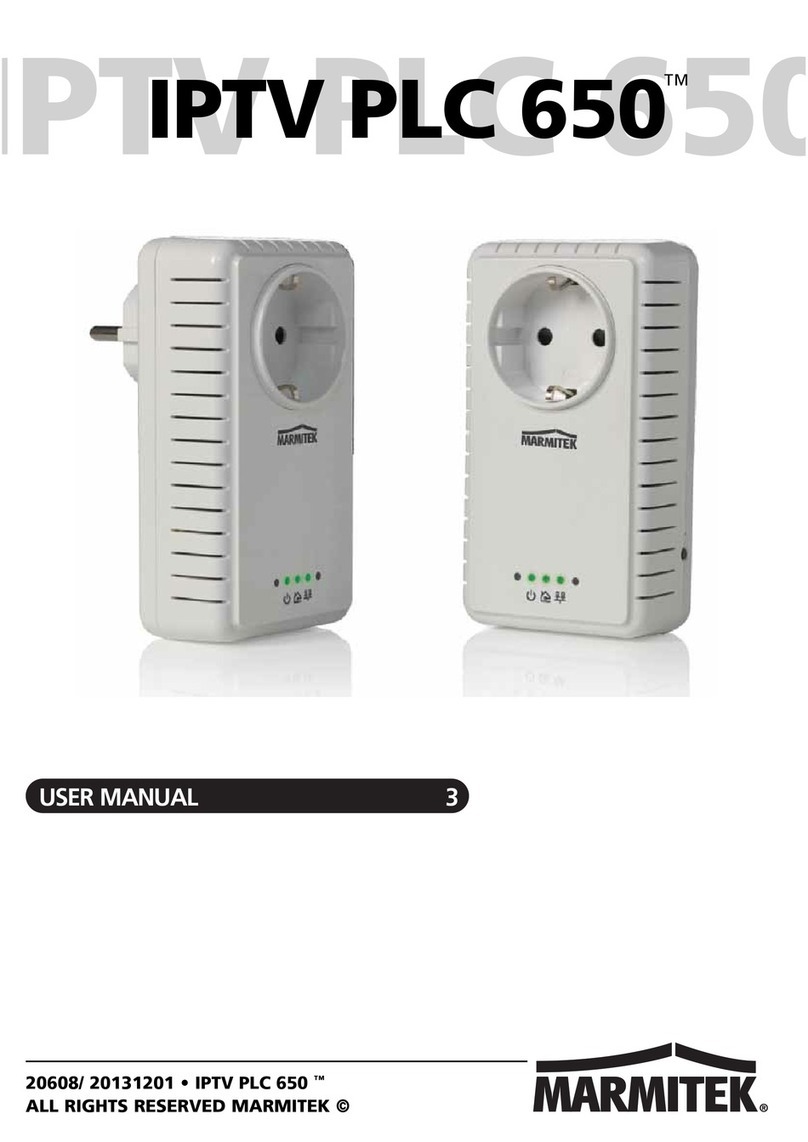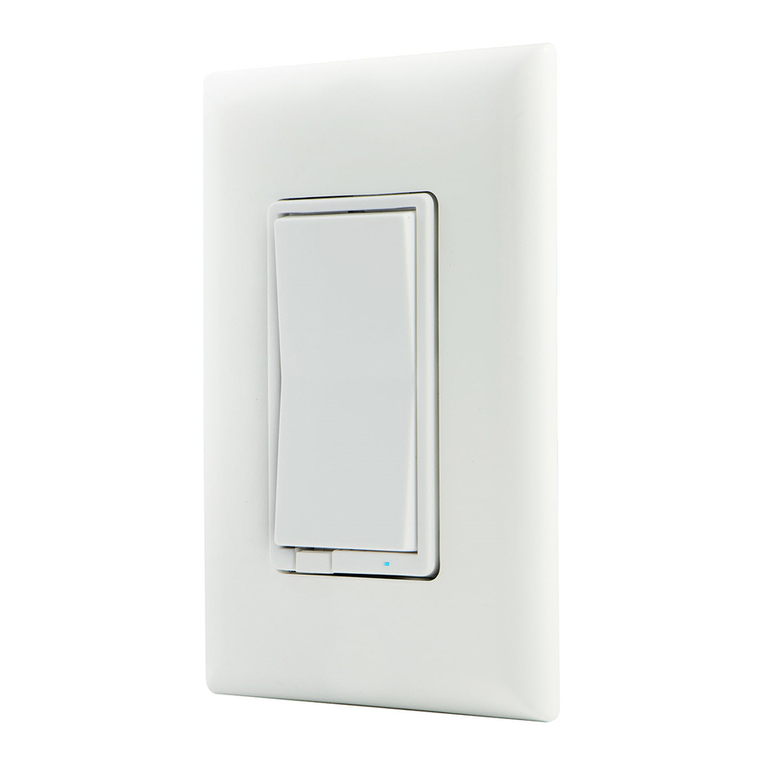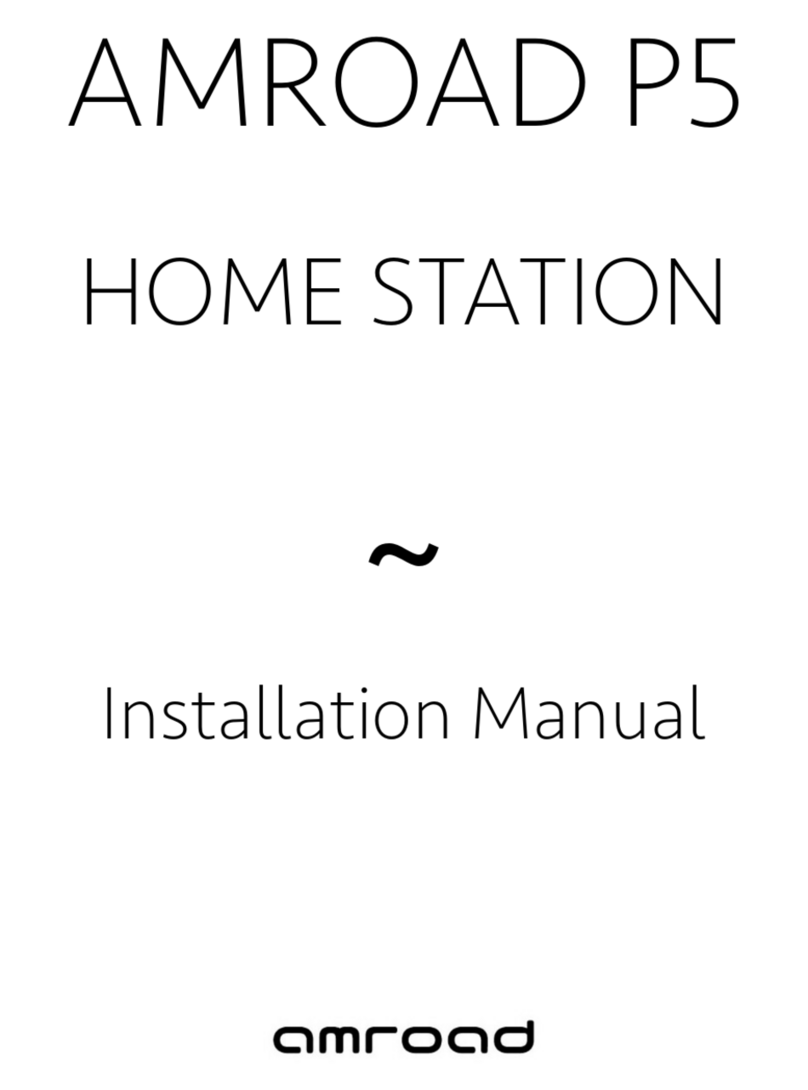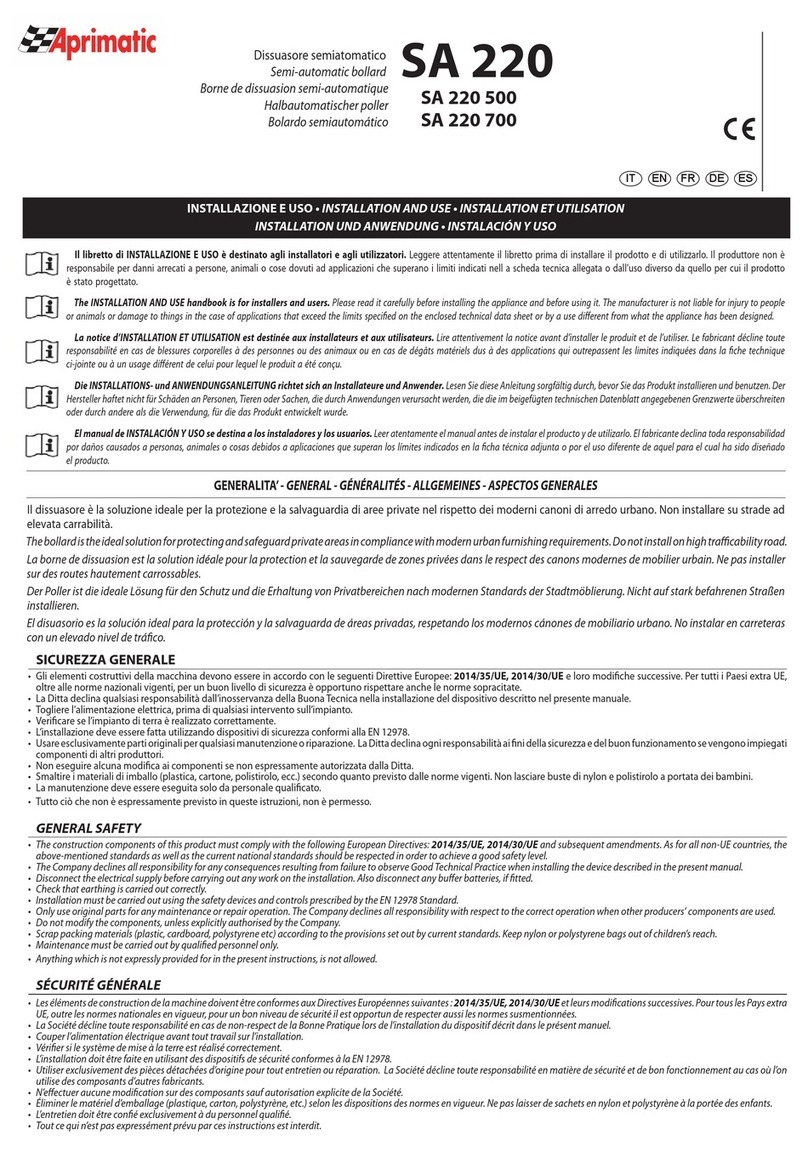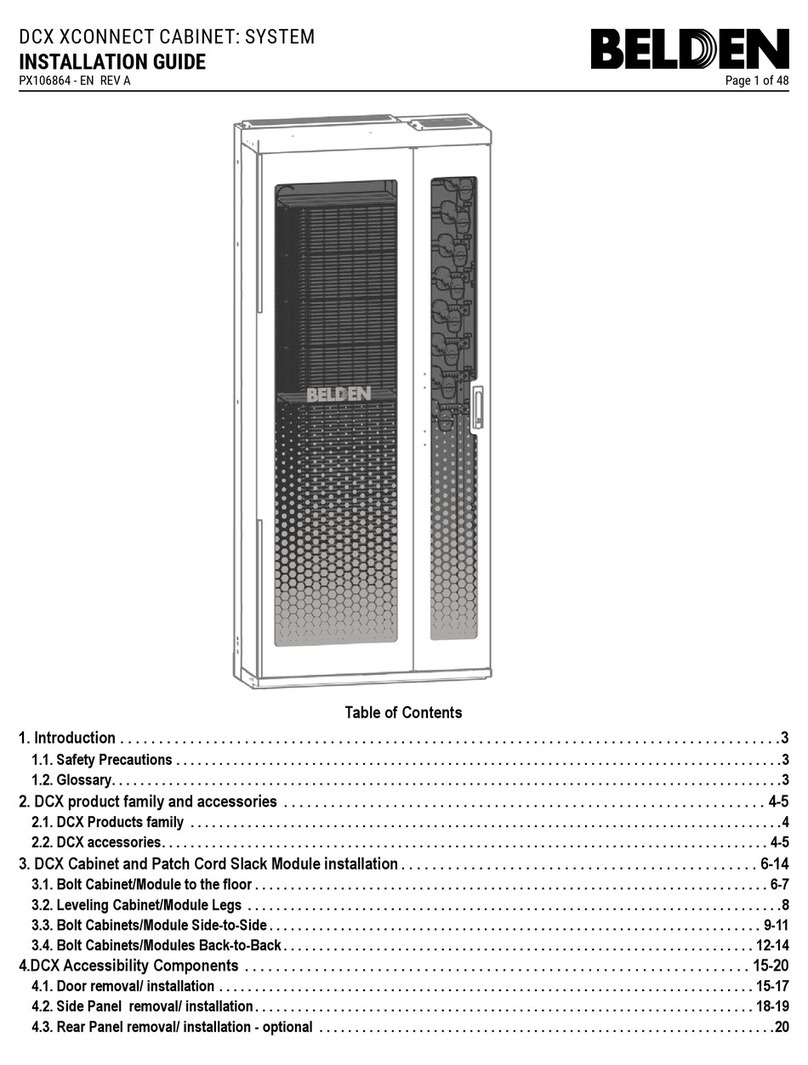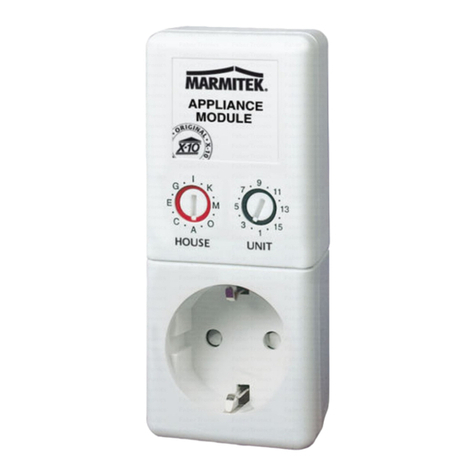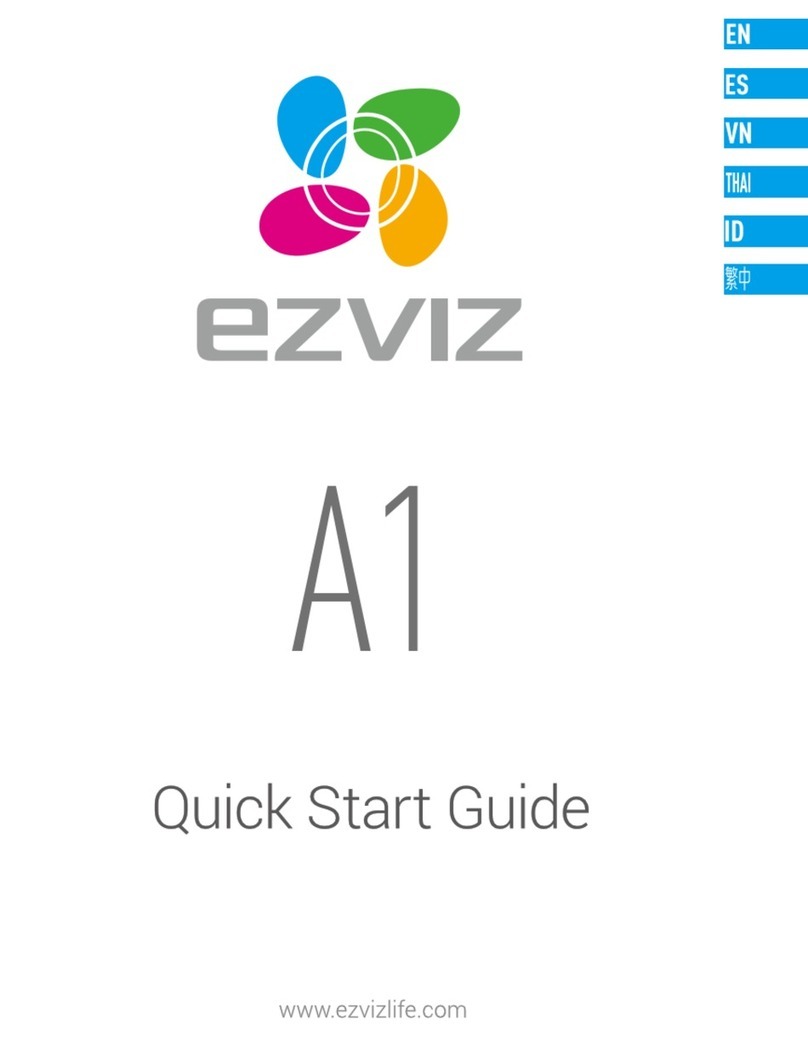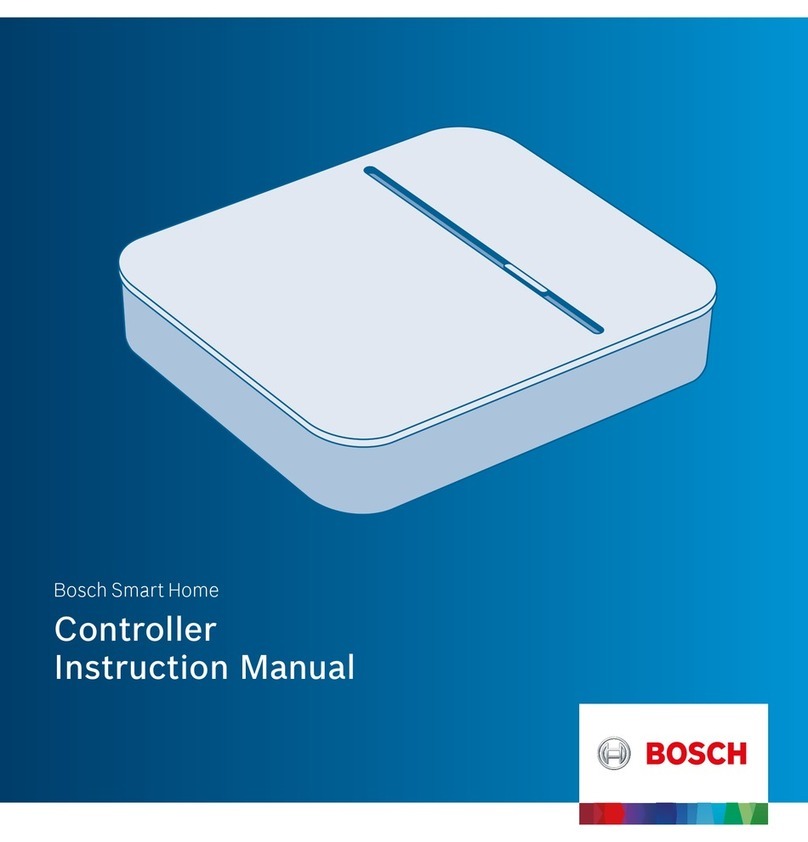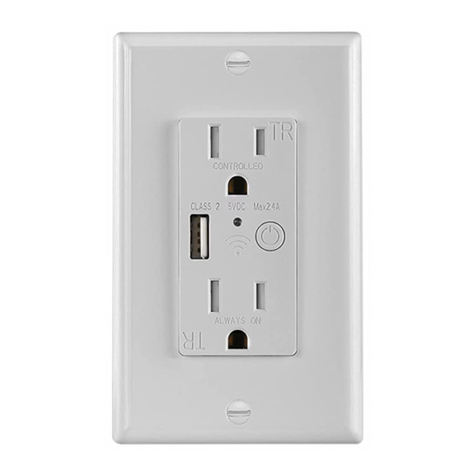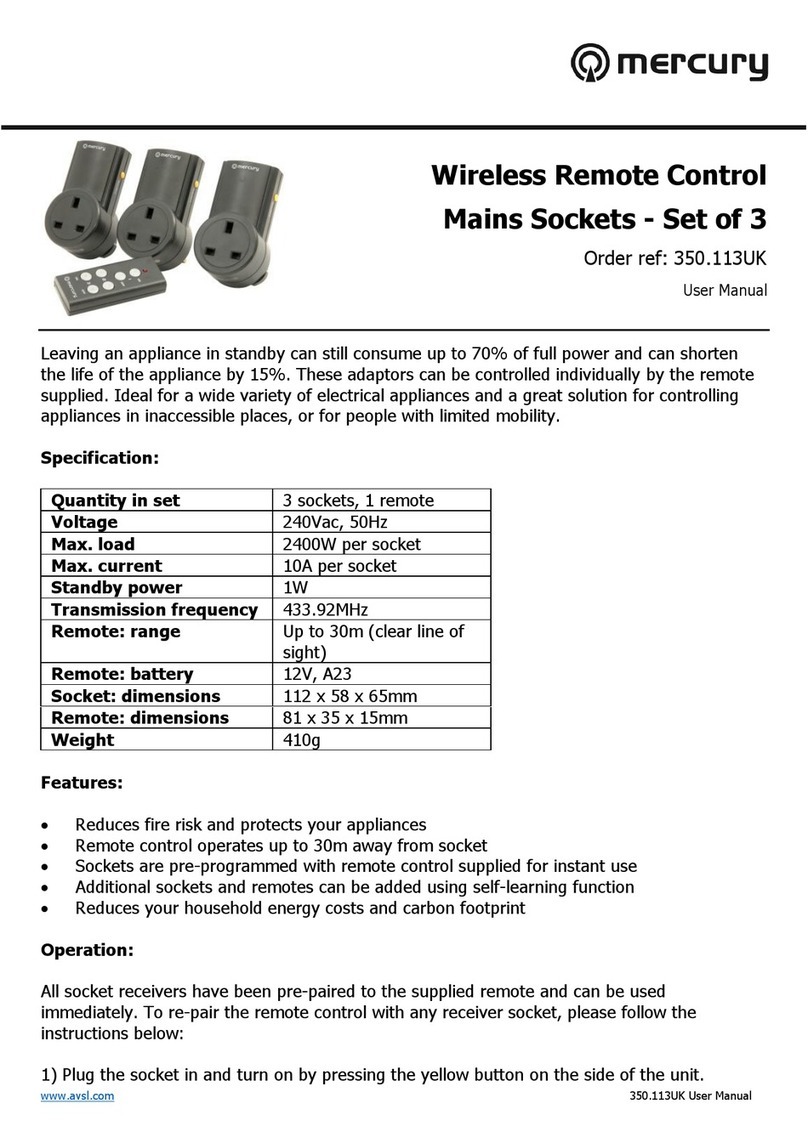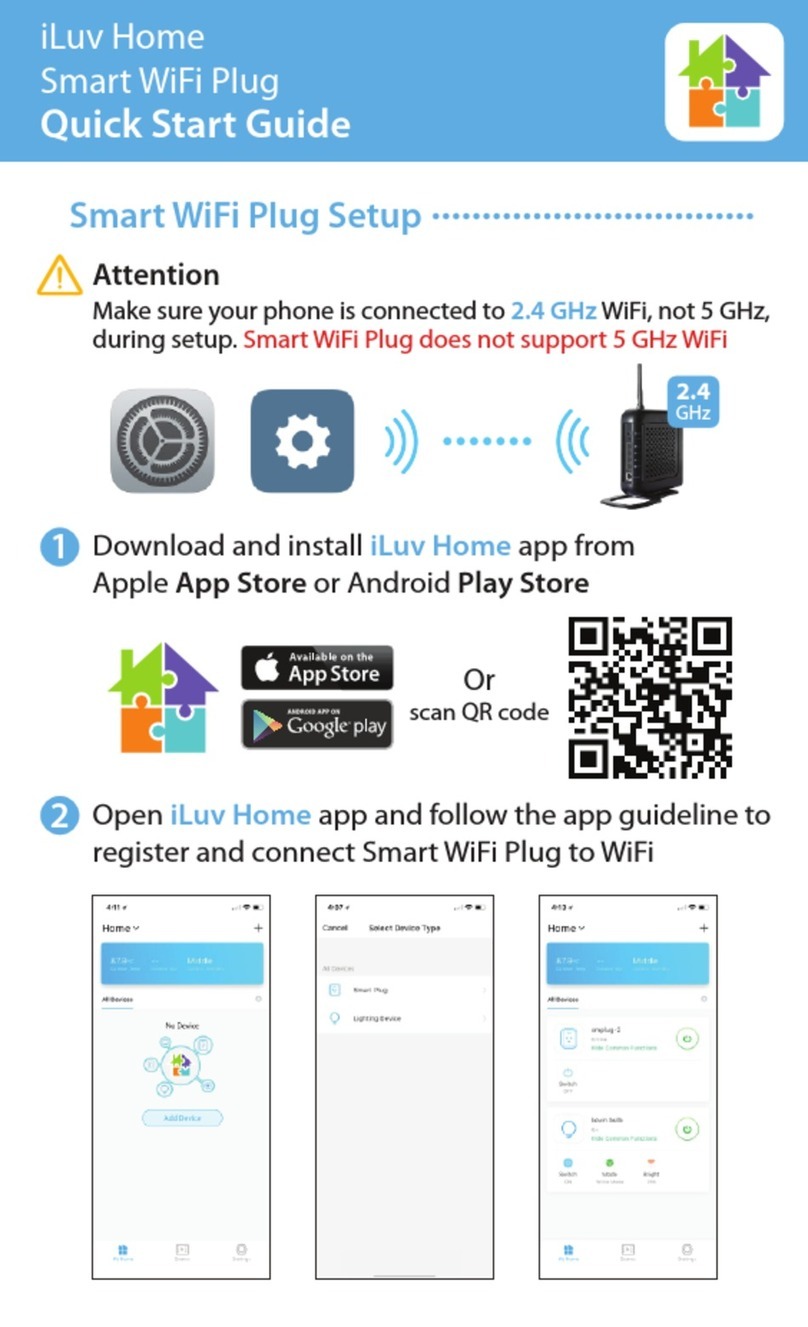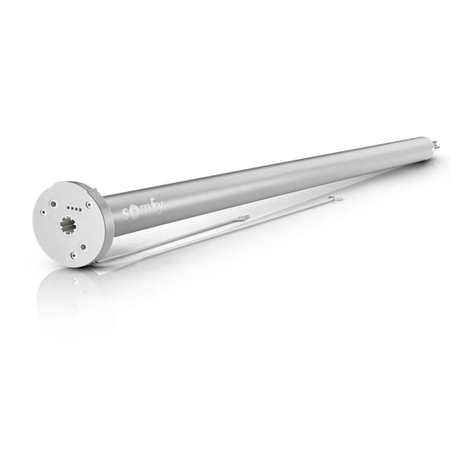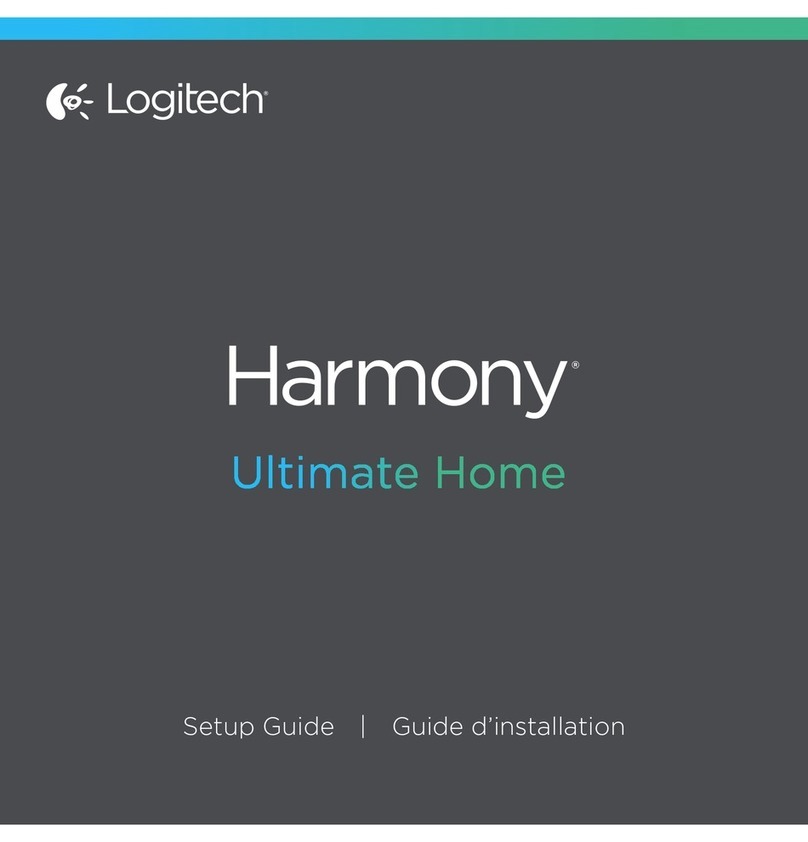nodon NODEMSP3101 User manual

NodOn
Z-Wave Plus Micro Smart Plug Switch E/F
SKU: NODEMSP3101
Quickstart
This is a On/Off Power Switch for Europe. To run this device please connect it to your mains power supply. To add this device to your network
execute the following action:
To include/add to the Z-Wave network, long press during 2 seconds to send several NIF during 30 seconds or a triple press to send a single NIF
What is Z-Wave?
Z-Wave is the international wireless protocol for communication in the Smart Home. This device is suited for use in the region mentioned in the Quickstart
section.
Z-Wave ensures a reliable communication by reconfirming every message ( two-way communication)
and every mains powered node can act as a repeater for other nodes (meshed network) in case the
receiver is not in direct wireless range of the transmitter.
This device and every other certified Z-Wave device can be used together with any other certified Z-
Wave device regardless of brand and origin as long as both are suited for the same frequency
range.
If a device supports secure communication it will communicate with other devices secure as long as
this device provides the same or a higher level of security. Otherwise it will automatically turn into a
lower level of security to maintain backward compatibility.
For more information about Z-Wave technology, devices, white papers etc. please refer to www.z-wave.info.
Product Description
The NodOn Micro Smart Plug can be controlled by any kind of Z-Wave (or Z-Wave Plus) gateway or other Z-Wave controller (standalone mode) such as
the NodOn Soft Remote or Octan Remote.
It existed in both standard, Type E (French) or Type F (German). Its very small design and volume allow easy integration, without obstructing nearby power
holes on a power strip. Furthermore, it can perform Power and Energy Metering.
The NodOn Smart Plug is based on brand new 500 series Z-Wave module from Sigma Designs, and support all the new features of Z-Wave Plus standard:
Longer range (up to 40m), lower power consumption, higher data rate transmission, and many more new features.
Prepare for Installation / Reset

Please read the user manual before installing the product.
In order to include (add) a Z-Wave device to a network it must be in factory default state. Please make sure to reset the device into factory default. You
can do this by performing an Exclusion operation as described below in the manual. Every Z-Wave controller is able to perform this operation however it is
recommended to use the primary controller of the previous network to make sure the very device is excluded properly from this network.
Reset to factory default
This device also allows to be reset without any involvement of a Z-Wave controller. This procedure should only be used when the primary controller is
inoperable.
To reset, long press during more than 5 seconds then release. Please use this procedure only when the primary controller is missing or otherwise
inoperable.
Safety Warning for Mains Powered Devices
ATTENTION: only authorized technicians under consideration of the country-specific installation guidelines/norms may do works with mains power. Prior to
the assembly of the product, the voltage network has to be switched off and ensured against re-switching.
Installation
1) Plug the NodOn® Micro Smart Plug on your power outlet.
2) Plug the electrical appliance, you want to control, on the NodOn® Micro Smart Plug.
3) The Micro Smart Plug allows to switch ON (Power ON) or switch OFF (Power OFF) the electrical appliance you want to control.
Switching ON or OFF can be done through the Micro Smart Plug local button, or any kind of Z-Wave® compatible devices, such as the NodOn® Octan
Remote, the NodOn® Soft Remote or a Home Automation Gateway.
If the electrical appliance (ex.: bedside lamp) has an ON/OFF button, make sure it’s positioned on “ON”, in order that the power ON of the Micro Smart
Plug will switch ON the lamp.
Inclusion/Exclusion
On factory default the device does not belong to any Z-Wave network. The device needs to be added to an existing wireless network to communicate
with the devices of this network. This process is called Inclusion.
Devices can also be removed from a network. This process is called Exclusion. Both processes are initiated by the primary controller of the Z-Wave
network. This controller is turned into exclusion respective inclusion mode. Inclusion and Exclusion is then performed doing a special manual action right
on the device.
Inclusion
To include/add to the Z-Wave network, long press during 2 seconds to send several NIF during 30 seconds or a triple press to send a single NIF

Exclusion
To exclude/remove from the Z-Wave network, long press during 2 seconds to send several NIF during 30 seconds or a triple press to send a single NIF
Product Usage
The Micro Smart Plug can be switched ON or OFF locally, through a short press on the local button. By default, the Micro Smart Plug is switched ON when
the LED is green, OFF when the LED is OFF.
Node Information Frame
The Node Information Frame (NIF) is the business card of a Z-Wave device. It contains information about the device type and the technical capabilities.
The inclusion and exclusion of the device is confirmed by sending out a Node Information Frame. Beside this it may be needed for certain network
operations to send out a Node Information Frame. To issue a NIF execute the following action: Press the button 3 times
Quick trouble shooting
Here are a few hints for network installation if things dont work as expected.
1. Make sure a device is in factory reset state before including. In doubt exclude before include.
2. If inclusion still fails, check if both devices use the same frequency.
3. Remove all dead devices from associations. Otherwise you will see severe delays.
4. Never use sleeping battery devices without a central controller.
5. Dont poll FLIRS devices.
6. Make sure to have enough mains powered device to benefit from the meshing
Association - one device controls an other device
Z-Wave devices control other Z-Wave devices. The relationship between one device controlling another device is called association. In order to control a
different device, the controlling device needs to maintain a list of devices that will receive controlling commands. These lists are called association groups
and they are always related to certain events (e.g. button pressed, sensor triggers, ...). In case the event happens all devices stored in the respective
association group will receive the same wireless command wireless command, typically a 'Basic Set' Command.
Association Groups:

Group Number Maximum
Nodes
Description
15 Z-Wave Plus Lifeline: This group is generally used to report information of the Micro Smart Plug to the
Main Controller of the networ
25 Follow State: When the Micro Smart Plug is switched ON (respectively OFF) using the local button, it
will send ON (respectively OFF) command to the associated devices. No command is sent if the
Micro Smart Plug is switched ON or OFF wirelessly. This group is configurable through the parameter
3.
35 Follow Complementary State: When the Micro Smart Plug is switched ON (respectively OFF) using
the local button, it will send OFF (respectively ON) command to the associated devices. No command
is sent if the Micro Smart Plug is switched ON or OFF wirelessly.
45 Metering - High Threshold - Set ON/OFF:When the Micro Smart Plug reaches over the high threshold
of power defined by the configuration parameter, it will send OFF or ON command to the
associateddevices. This group is configurable through the parameter 25 and 27.
55 Metering - Low Threshold - Set ON/OFF:When the Micro Smart Plug reaches below the low threshold
of ower defined by the configuration parameter, it will send OFF or ON command to the associated
devices.This group is configurable through the parameters 26 and 27.
65 Metering Report:All the meter reports and notifications triggered by Metering parameters will be
reported to the devices present in this group.This group is configurable through the parameters 21,
22, 23 and 24.
Configuration Parameters
Z-Wave products are supposed to work out of the box after inclusion, however certain configuration can adapt the function better to user needs or unlock
further enhanced features.
IMPORTANT: Controllers may only allow configuring signed values. In order to set values in the range 128 ... 255 the value sent in the application shall be
the desired value minus 256. For example: To set a parameter to 200 it may be needed to set a value of 200 minus 256 = minus 56. In case of a two byte
value the same logic applies: Values greater than 32768 may needed to be given as negative values too.
Parameter 1: Default State
This parameter defines the status of the Micro Smart Plug after a power outage or after being plugged.
Size: 1 Byte, Default Value: 2
Setting Description
0ON
1OFF
2State before power outage
Parameter 3: Follow State
This parameter allows to enable or disable Group 2 & Group 3.
Size: 1 Byte, Default Value: 3
Setting Description
0Group 2 and Group 3 disable
1Group 2 enable, Group 3 disable
2Group 2 disable, Group 3 enable
3Group 2 and Group 3 enable
Parameter 4: Always ON
This parameter forces the Micro Smart Plug status to be ON. While enable it is not possible to switch OFF the plug (local or wireless).
Size: 1 Byte, Default Value: 0
Setting Description
0Always ON disable
1Always ON enable
Parameter 5: Alarm 1 Type Configuration
This parameter is to set the Alarm 1 Type. Use the Home Automation Gateway interface or our Alarm set-up form to define the value corresponding to your
need.
Size: 2 Byte, Default Value: 0
Setting Description
0 - 65535 To set-up your values please follow this link : www.nodon.fr/support/msp3/alarm

Parameter 6: Alarm 1 Specifications
This parameter is to set the Alarm 1 Specifications. Use the Home Automation Gateway interface or our Alarm set-up form to define the value
corresponding to your need.
Size: 4 Byte, Default Value: 0
Setting Description
0 - 2097151999 To set-up your values please follow this link : www.nodon.fr/support/msp3/alarm
Parameter 7: Alarm 2 Type Configuration
This parameter is to set the Alarm 2 Type. Use the Home Automation Gateway interface or our Alarm set-up form to define the value corresponding to your
need.
Size: 2 Byte, Default Value: 0
Setting Description
0 - 65535 To set-up your values please follow this link : www.nodon.fr/support/msp3/alarm
Parameter 8: Alarm 2 Specifications
This parameter is to set the Alarm 2 Specifications. Use the Home Automation Gateway interface or our Alarm set-up form to define the value
corresponding to your need.
Size: 4 Byte, Default Value: 0
Setting Description
0 - 2097151999 To set-up your values please follow this link : www.nodon.fr/support/msp3/alarm
Parameter 9: Alarm 3 Type Configuration
This parameter is to set the Alarm 3 Type. Use the Home Automation Gateway interface or our Alarm set-up form to define the value corresponding to your
need.
Size: 2 Byte, Default Value: 0
Setting Description
0 - 65535 To set-up your values please follow this link : www.nodon.fr/support/msp3/alarm
Parameter 10: Alarm 3 Specifications
This parameter is to set the Alarm 3 Specifications. Use the Home Automation Gateway interface or our Alarm set-up form to define the value
corresponding to your need.
Size: 4 Byte, Default Value: 0
Setting Description
0 - 2097151999 To set-up your values please follow this link : www.nodon.fr/support/msp3/alarm
Parameter 11: Alarm 4 Type Configuration
This parameter is to set the Alarm 4 Type. Use the Home Automation Gateway interface or our Alarm set-up form to define the value corresponding to your
need.
Size: 2 Byte, Default Value: 0
Setting Description
0 - 65535 To set-up your values please follow this link : www.nodon.fr/support/msp3/alarm
Parameter 12: Alarm 4 Specifications
This parameter is to set the Alarm 4 Specifications. Use the Home Automation Gateway interface or our Alarm set-up form to define the value
corresponding to your need.
Size: 4 Byte, Default Value: 0
Setting Description
0 - 2097151999 To set-up your values please follow this link : www.nodon.fr/support/msp3/alarm
Parameter 13: Alarm 5 Type Configuration
This parameter is to set the Alarm 5 Type. Use the Home Automation Gateway interface or our Alarm set-up form to define the value corresponding to your
need.
Size: 2 Byte, Default Value: 0
Setting Description
0 - 65535 To set-up your values please follow this link : www.nodon.fr/support/msp3/alarm
Parameter 15: Alarm 6 Type Configuration
This parameter is to set the Alarm 6 Type. Use the Home Automation Gateway interface or our Alarm set-up form to define the value corresponding to your
need.
Size: 2 Byte, Default Value: 0
Setting Description

0 - 65535 To set-up your values please follow this link : www.nodon.fr/support/msp3/alarm
Parameter 16: Alarm 6 Specifications
This parameter is to set the Alarm 6 Specifications. Use the Home Automation Gateway interface or our Alarm set-up form to define the value
corresponding to your need.
Size: 4 Byte, Default Value: 0
Setting Description
0 - 2097151999 To set-up your values please follow this link : www.nodon.fr/support/msp3/alarm
Parameter 17: Alarm 7 Type Configuration
This parameter is to set the Alarm 7 Type. Use the Home Automation Gateway interface or our Alarm set-up form to define the value corresponding to your
need.
Size: 2 Byte, Default Value: 0
Setting Description
0 - 2097151999 To set-up your values please follow this link : www.nodon.fr/support/msp3/alarm
0 - 65535 To set-up your values please follow this link : www.nodon.fr/support/msp3/alarm
Parameter 18: Alarm 7 Specifications
This parameter is to set the Alarm 7 Specifications. Use the Home Automation Gateway interface or our Alarm set-up form to define the value
corresponding to your need.
Size: 4 Byte, Default Value: 0
Setting Description
0 - 2097151999 To set-up your values please follow this link : www.nodon.fr/support/msp3/alarm
Parameter 19: Alarm 8 Type Configuration
This parameter is to set the Alarm 8 Type. Use the Home Automation Gateway interface or our Alarm set-up form to define the value corresponding to your
need.
Size: 2 Byte, Default Value: 0
Setting Description
0 - 65535 To set-up your values please follow this link : www.nodon.fr/support/msp3/alarm
Parameter 20: Alarm 8 Specifications
This parameter is to set the Alarm 8 Specifications. Use the Home Automation Gateway interface or our Alarm set-up form to define the value
corresponding to your need.
Size: 4 Byte, Default Value: 0
Setting Description
0 - 2097151999 To set-up your values please follow this link : www.nodon.fr/support/msp3/alarm
Parameter 21: Power Auto-Sending Report
This parameter will send a power report automatically if the power value changes of x % W (Watt) compared to the last report.
Size: 1 Byte, Default Value: 10
Setting Description
0Power Auto-Polling Report Disable
1 - 100 Power Auto-Polling Report Enable with 1% (to100%) differential
Parameter 22: Overload Report
This parameter will switch off the Micro Smart Plug in case the power is above x W (Watt) and send an alarm to the primary controller.This parameter has
the highest execution priority between all the metering configurations for security reason.
Size: 2 Byte, Default Value: 1840
Setting Description
0Overload Report Disable (Not Recommended)
1 - 1840 Overload Report enable with a upper limit of 1 W (to 1840 W)
Parameter 23: Energy Auto-Sending Report
This parameter will send a new energy report automatically if the energy value changes of x Wh (Watt-hour) compared to the last report.
Size: 2 Byte, Default Value: 1000
Setting Description
0Energy Auto-Polling Report Disable
1 - 65535 Energy Auto-Polling Report enable with 1 Wh (to 65535 Wh) diffential

Parameter 24: Metering Pulse
Whatever other metering reports, this parameter will send one power and one energy report to the lifeline every x s (Seconds).
Size: 2 Byte, Default Value: 3600
Setting Description
0Metering Pulse disable
1 - 65535 Metering Pulse enable and send report every 1 s (to 65535 s)
Parameter 25: Power High Threshold
This parameter defines the High Threshold power value.
Size: 2 Byte, Default Value: 20
Setting Description
0Power High Threshold disable
1 - 65535 Power High Threshold enable with the value from 1 W (to 65535 W)
Parameter 26: Power Low Threshold
This parameter defines the Low Threshold power value.
Size: 2 Byte, Default Value: 5
Setting Description
0Power Low Threshold disable
1 - 65535 Power Low Threshold enable with the value from 1 W (to 65535 W)
Parameter 27: Power Threshold Action
This parameter will define the Micro Smart Plug actions if the power Low and High Threshold are reached.The value may be the sum of available values.
For example, if you want:- Power High Threshold Action is enable and sent ON to Group 4(3)- Power Low Threshold Action is enable and sent OFF to
Group 5 (4)the parameter value must be 3+4=7.
Size: 1 Byte, Default Value: 7
Setting Description
0Power Threshold Action is disable.
1Power High Threshold Action is enable and send the command OFF to Group 4
3Power High Threshold Action is enable and send the command ON to Group 4
4Power Low Threshold Action is enable and send the command OFF to Group 5
12 Power Low Threshold Action is enable and send the command ON to Group 5
Technical Data
Dimensions 0.0440000x0.0440000x0.0780000 mm
Weight 70 gr
Hardware Platform ZM5202
EAN 3700313920596
IP Class IP 20
Voltage 230 V
Load 1840 W
Device Type On/Off Power Switch
Network Operation Always On Slave
Z-Wave Version 6.51.06
Certification ID ZC10-16045035
Z-Wave Product Id 0x0165.0x0001.0x0003
Supported Command Classes
Switch All

Association Group Information V2
Association V2
Basic
Configuration
Device Reset Locally
Firmware Update Md V2
Indicator
Manufacturer Specific V2
Meter V4
Notification V4
Powerlevel
Protection V2
Switch Binary
Version V2
Zwaveplus Info V2
Controlled Command Classes
Application Status
Basic
Explanation of Z-Wave specific terms
Controller — is a Z-Wave device with capabilities to manage the network. Controllers are typically Gateways,Remote Controls or battery operated
wall controllers.
Slave — is a Z-Wave device without capabilities to manage the network. Slaves can be sensors, actuators and even remote controls.
Primary Controller — is the central organizer of the network. It must be a controller. There can be only one primary controller in a Z-Wave network.
Inclusion — is the process of adding new Z-Wave devices into a network.
Exclusion — is the process of removing Z-Wave devices from the network.
Association — is a control relationship between a controlling device and a controlled device.
Wakeup Notification — is a special wireless message issued by a Z-Wave device to announces that is able to communicate.
Node Information Frame — is a special wireless message issued by a Z-Wave device to announce its capabilities and functions.
(c) 2019 Z-Wave Europe GmbH, Antonstr. 3, 09337 Hohenstein-Ernstthal, Germany, All rights reserved, www.zwave.eu. The template is maintained by Z-Wave
Europe GmbH. The product content is maintained by Z-Wave Europe GmbH , Supportteam, suppo[email protected]u. Last update of the product data: 2017-09-04
13:21:43
Table of contents
Other nodon Home Automation manuals
